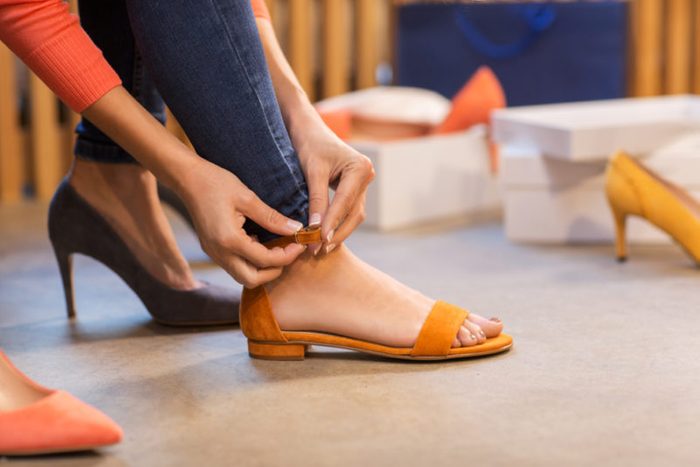
Shoe mistakes that cause foot pain
Whether you like to wear sky-high stilettos or bohemian flip flops, chances are if the shoe fits, you’ll wear it. But it’s probably a good idea to put a bit more thought into your choice of footwear, beyond “they look good.”
The proper footwear not only can help prevent foot pain, but also be good for your entire body. Wearing the right pair of shoes can help you feel comfortable, be pain free, and even prevent injuries. Shoe choice matters, as do a lot of other things—like where you buy them and how often you replace them.
We spoke to several experts who explain the common shoe mistakes people make that could be causing foot pain.
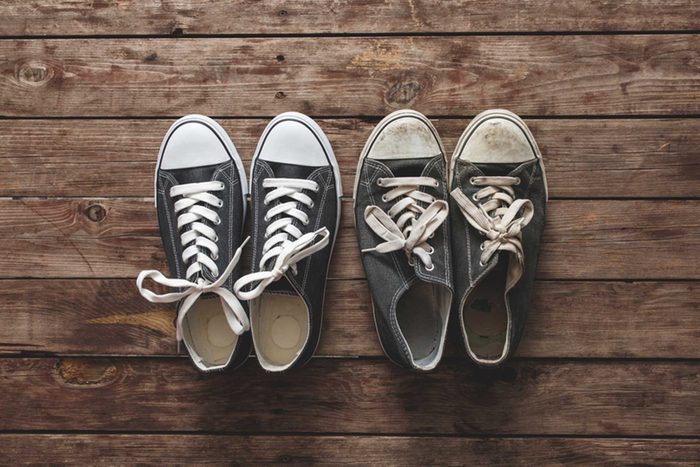
You don’t replace shoes that have worn-down heels
Have you ever noticed that one side of the bottom of your sneaker’s heel can be more worn-down than the other after a couple months of use? It’s a very normal phenomenon, according to Jane Pontious, chair of the department of podiatric surgery at Temple University in Philadelphia. Your heel, positioned directly below your body, supports all of your weight. We all walk slightly differently, so it makes sense that some people may lean more on one side of the shoe than the other. However, that doesn’t make it healthy for your foot and ankle to be put in this imbalanced position in the long term. “People will look at the sneaker and say, ‘Well, it’s new,’ and I’ll say, ‘Look at the heel. You’re no longer standing normally, so you have to replace it,’” says Pontious. (Learn the subtle signs of disease your feet can reveal.)
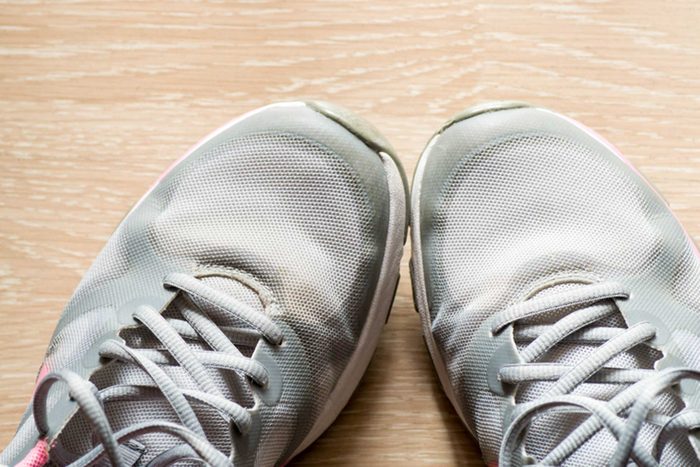
You’re not replacing your running shoes enough
The conventional wisdom is that someone can run 100 miles in each pair of running shoes before they should be replaced. Living by this rule, someone who runs five miles four or five times a week would have to replace his or her shoes almost every month. San Francisco-based Kaiser Permanente podiatrist Jack Schuberth admits that this would quickly become an expensive shoe replacement habit, but it’s an important one to keep, even if you replace your shoes slightly less often. After too much mileage, the sole of your running shoe and the cushioning below your foot can wear down, decreasing the amount of padding your feet get from your shoes as they pound the pavement. Schuberth recommends that runners pay attention to any pain they may feel in their feet, ankles, and knee and hip joints; it may be a result of overused running shoes. Plus, here are some more running mistakes you didn’t know you were making.
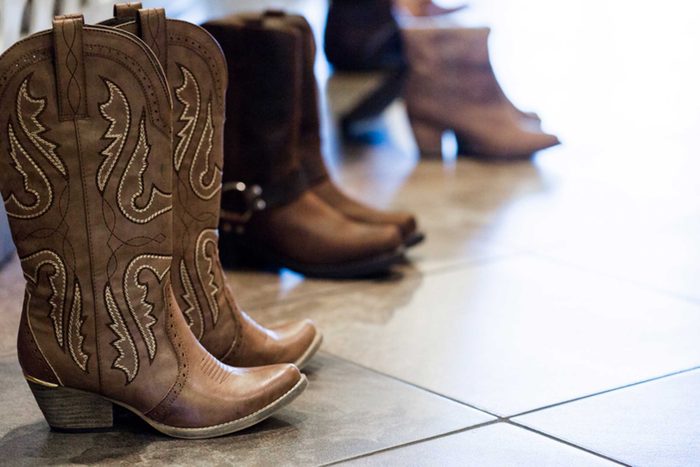
You crush your toes in pointy-toed shoes
One of the most common foot problems Pontious sees when she works with women on a day-to-day basis is “crushed” toes from shoes that are too narrow. When one’s toes are repeatedly shoved together in pointy-toed heels, the damage to their feet starts to surface in the form of bunions, hammertoes, muscle imbalances, and even nerve damage. This can also lead to foot pain. “I always tell patients to look at the front of your foot and at the shape of it, and at the shoe that you’re buying,” says Pontious. “If it’s coming to a point like a pump, remember that your toes are being pushed in from both sides, and eventually those toes are going to have problems because of it.”

You buy shoes online
In the same way that shoes that are too narrow can pinch your toes, shoes that are too big or too small can alter the way you walk and move. In other words, the size of your shoe matters. And while many people do purchase shoes online without a problem, some doctors don’t recommend it, particularly if you’ve never tried on the shoe you’re buying. Checking the fit of the shoe before you purchase a pair allows you to experience its feel, to make sure that you have the right size, and to avoid spending money on a pair of shoes that will be too uncomfortable to wear, says Pontious. (Ill-fitting shoes can lead to foot pain and blisters, which you can treat with these blister home remedies.) While many shoes can be returned without paying extra for shipping, you may be tempted to hold onto a pair that’s not a perfect fit just to avoid the hassle of a return.
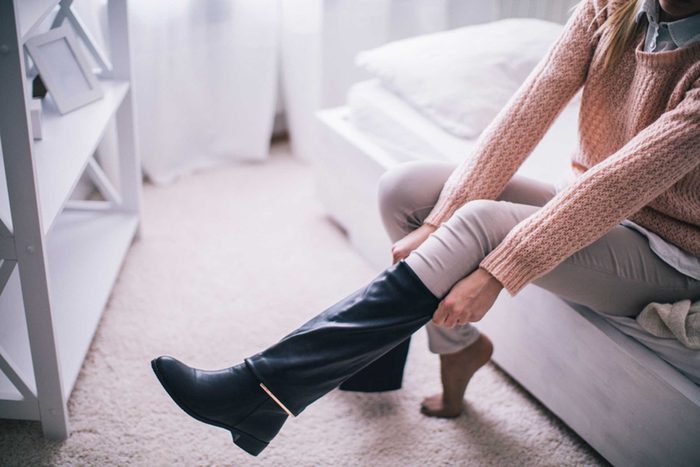
You try on shoes in the morning instead of later in the day
Before you head off to the store to try on new shoes, make sure it’s the right time of day to do it. As a result of the way your blood circulates throughout your body, the longer you’re awake and standing, the more blood is going to pool in the lower part of your body and in your feet, making them swell slightly. Therefore, Jonathan Labovitz, a professor at Western University of Health Sciences’ College of Podiatric Medicine in Pomona, California, says it’s important to try on shoes during the middle of the day. Or you can opt for even later, when your feet have already swollen a little bit, so you can account for this slight difference in size. “I think the most common [mistake] is to try shoes on over the weekend, and to do it first thing in the morning when you do your errands,” says Labovitz. “So people buy a shoe that doesn’t account for any of the swelling that they’ll naturally get during the day being on their feet. The shoes will end up being too tight and constrictive.”
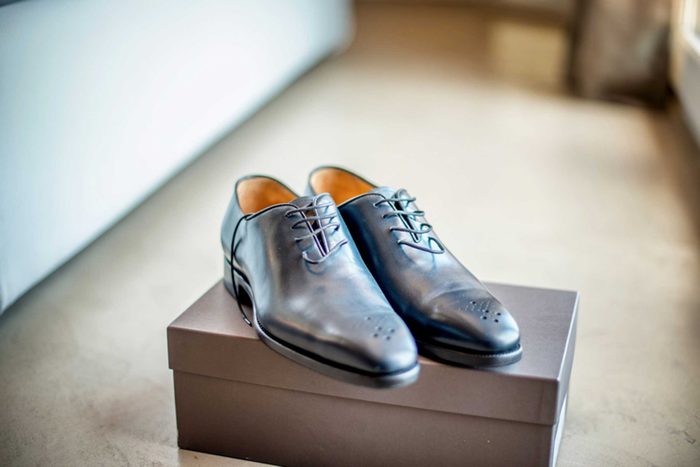
You try shoes on too quickly
Just as there’s a proper time of day to try on shoes, there are also best practises for how and how long to try on shoes, according to Labovitz. It’s important to try them on standing up, as your foot will slide forward as soon as you do, potentially changing the feel of the shoe. But even after standing up, Pontious says to make sure to spend five or 10 minutes walking around or standing in the shoes, too. Make sure they feel comfortable and healthy for your feet. Labovitz says it’s also important to have a store employee assess the fit of the shoe through checking the positioning of your toes. You want enough width in the shoe for all of your toes to sit comfortably, and enough length for your longest toe (even if that’s your second toe) to be able to stretch out.
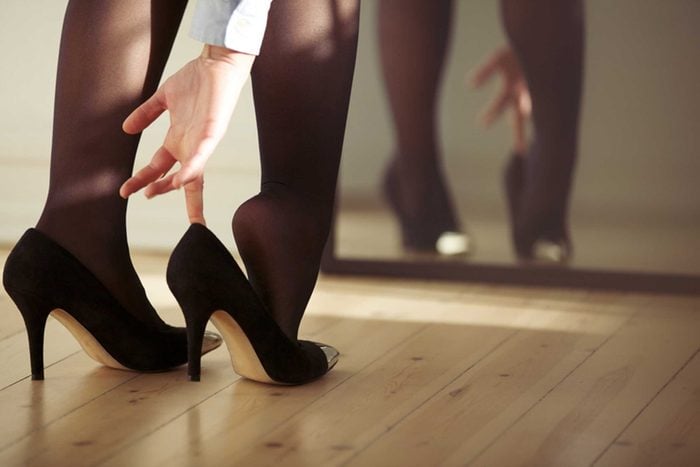
You don’t wear shoes with arch support
The necessity of arch support is a controversial topic among podiatrists; some think it plays a crucial role in correcting the alignment of some people’s feet, and some think its only purpose is increased comfort. One thing to be sure of is that it can’t hurt, especially if you do have an especially high arch or an especially flat foot. If you’re feeling any consistent discomfort in your foot, talk to a podiatrist about getting over-the-counter or custom insoles for your shoes. At the least, they’ll make your day-to-day life and all the walking that comes with it slightly more comfortable.
Next, read up on the rampant health myths that need to die.
